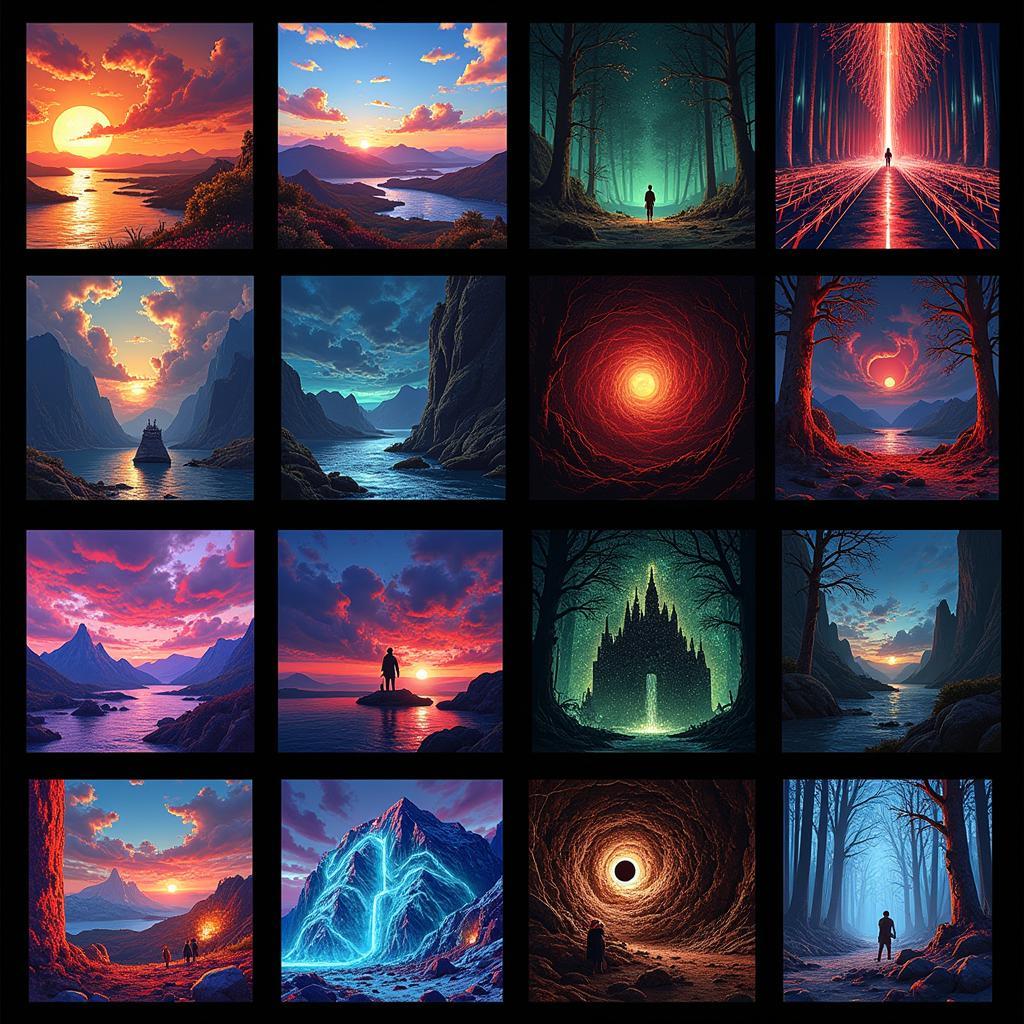Unraveling the Mysteries of a Maze Rock Art Site
Maze Rock Art Sites offer a captivating glimpse into the past, whispering stories of ancient cultures and beliefs. These enigmatic carvings, etched into stone surfaces, often depict intricate labyrinths and geometric patterns, leaving modern observers to ponder their meaning and purpose. Let’s delve into the fascinating world of maze rock art, exploring their origins, interpretations, and significance in the broader context of human history. rock art family
Deciphering the Symbolism of Maze Rock Art
Maze rock art sites are scattered across the globe, from the deserts of the American Southwest to the rocky coasts of Scandinavia. The recurring motif of the maze, a complex network of paths and dead ends, suggests a universal human fascination with journeys, both physical and spiritual. Some researchers believe these carvings represent pilgrimages or rites of passage, while others see them as symbolic representations of the cosmos or the underworld. What do you think these ancient symbols mean?
One prevailing theory suggests that maze rock art served as a form of meditation or spiritual practice. Tracing the labyrinthine pathways with one’s finger or walking through a larger, life-sized maze could have been a way to connect with the divine or achieve altered states of consciousness. The repetitive nature of the maze pattern might have also induced a trance-like state, facilitating communication with the spirit world.
Exploring the Global Distribution of Maze Rock Art
Maze rock art isn’t confined to a single region or culture. These enigmatic symbols appear in diverse locations, suggesting a shared human impulse to create and interact with these complex patterns. From the Bronze Age rock carvings of Europe to the petroglyphs of indigenous cultures in North America and Australia, maze motifs emerge across time and space. This widespread distribution raises intriguing questions about the potential cultural exchange and diffusion of ideas in the ancient world.
What cultures created maze rock art?
Numerous cultures have contributed to the rich tapestry of maze rock art. Native American tribes, including the Hopi and Anasazi, left behind intricate maze carvings in the American Southwest. Similar patterns can be found in the rock art of ancient Celtic cultures in Europe and Aboriginal communities in Australia. This cross-cultural presence speaks to the enduring appeal of the maze as a powerful symbol.
The Art of Bev Doolittle and the Modern Interpretation of Maze Rock Art
Modern artists, like Bev Doolittle, continue to draw inspiration from ancient rock art traditions. While Doolittle’s work doesn’t focus exclusively on mazes, her camouflaged imagery and intricate compositions echo the visual complexity and hidden meanings found in maze rock art. This connection highlights the timeless quality of these ancient symbols and their continued relevance in contemporary artistic expression. the art of bev doolittle
Dr. Elena Reyes, a renowned archaeologist specializing in rock art, states, “Maze rock art represents a tangible link to the spiritual and ritual practices of our ancestors. These carvings offer a window into their worldview and their understanding of the cosmos.” Another expert, Dr. James Carter, an anthropologist specializing in Native American cultures, adds, “The maze motif in rock art speaks to universal human themes of journey, transformation, and the search for meaning.”
In conclusion, maze rock art sites stand as testaments to the ingenuity and spiritual depth of ancient cultures. These enigmatic carvings invite us to explore the mysteries of the past and to connect with the enduring human fascination with journeys, both physical and spiritual. The maze rock art site continues to inspire awe and wonder, reminding us of the interconnectedness of human experience across time and space.
FAQ
- What is maze rock art? Maze rock art refers to carvings of labyrinthine patterns found on rock surfaces worldwide.
- Where can maze rock art be found? Maze rock art is found globally, from North America to Europe and Australia.
- What is the significance of maze rock art? It’s believed to represent spiritual journeys, rites of passage, or cosmological maps.
- How old is maze rock art? The age varies depending on location, with some examples dating back thousands of years.
- Are there modern interpretations of maze rock art? Yes, contemporary artists draw inspiration from these ancient symbols, incorporating them into their work.
- What can we learn from maze rock art? Maze rock art offers insights into the spiritual beliefs and practices of ancient cultures.
- How is maze rock art studied? Archaeologists and anthropologists study maze rock art to understand its cultural and historical significance.
You might also be interested in arts in the park forest lake or castle rock co art festival. For those interested in communication skills, art of arguing might be a good read.
For further assistance, contact us at Phone Number: 02462573573, Email: [email protected] or visit our address: Savico Megamall, 7-9 Đ. Nguyễn Văn Linh, Gia Thụy, Long Biên, Hà Nội 10000, Việt Nam. We have a 24/7 customer support team.

